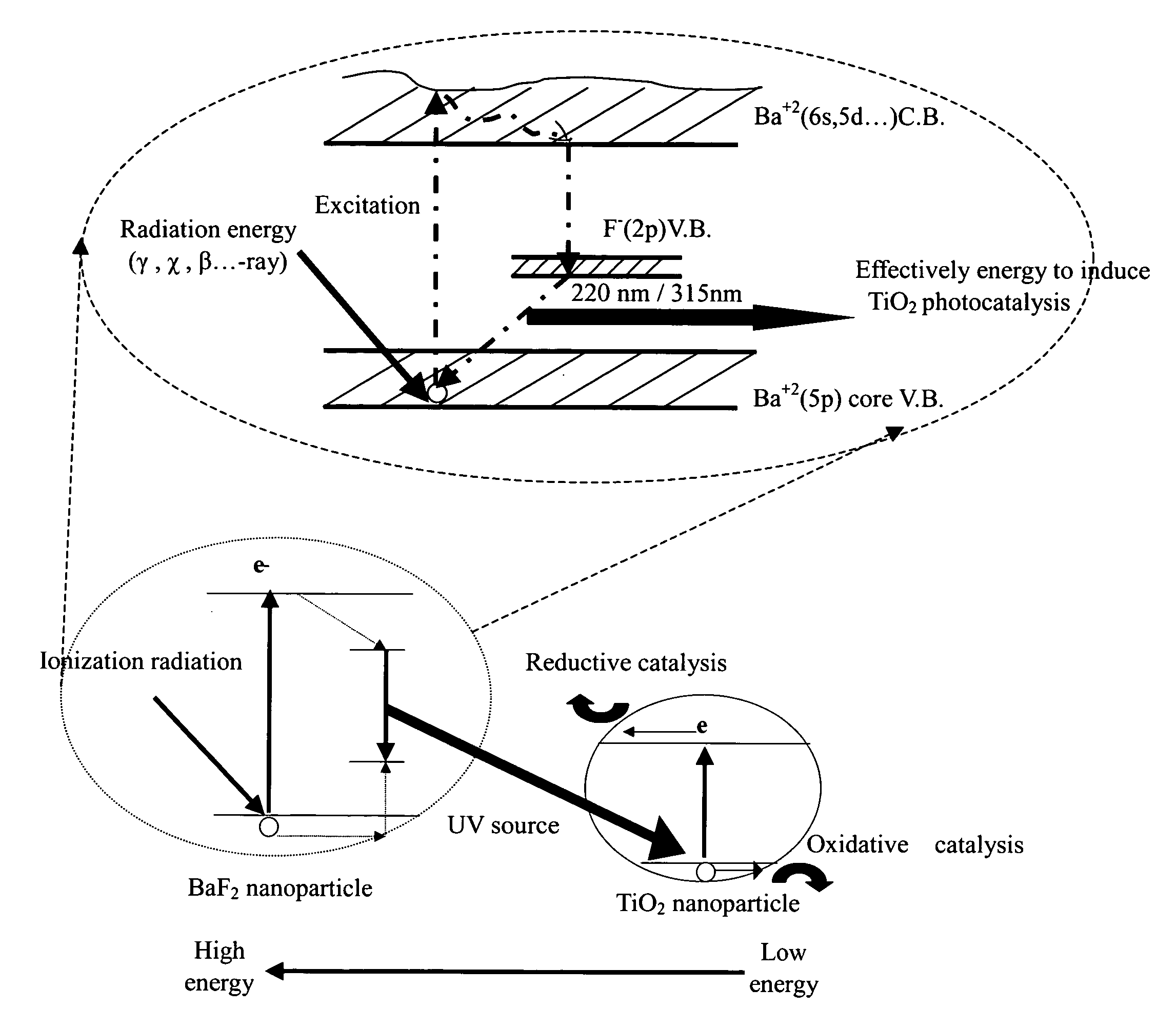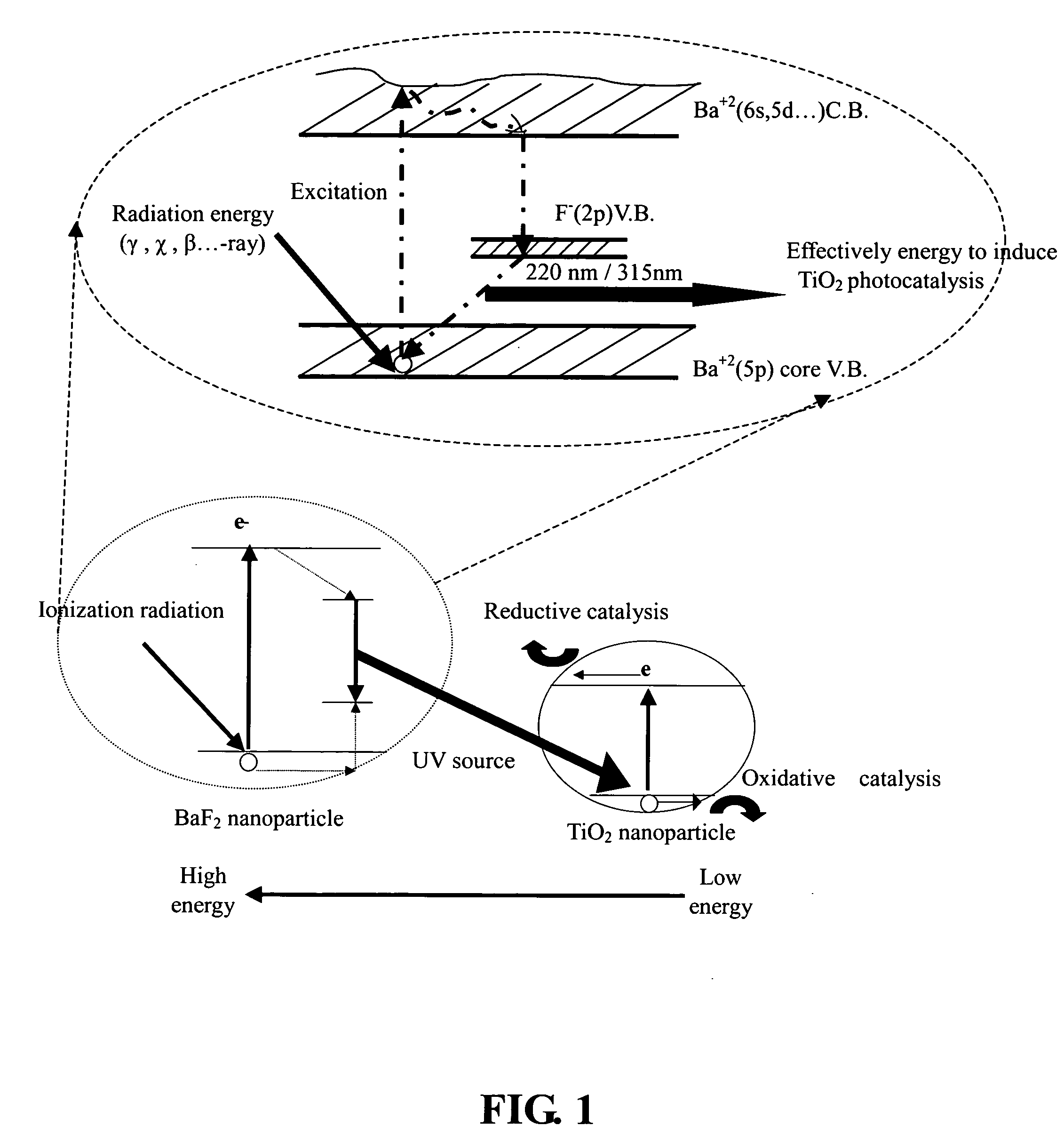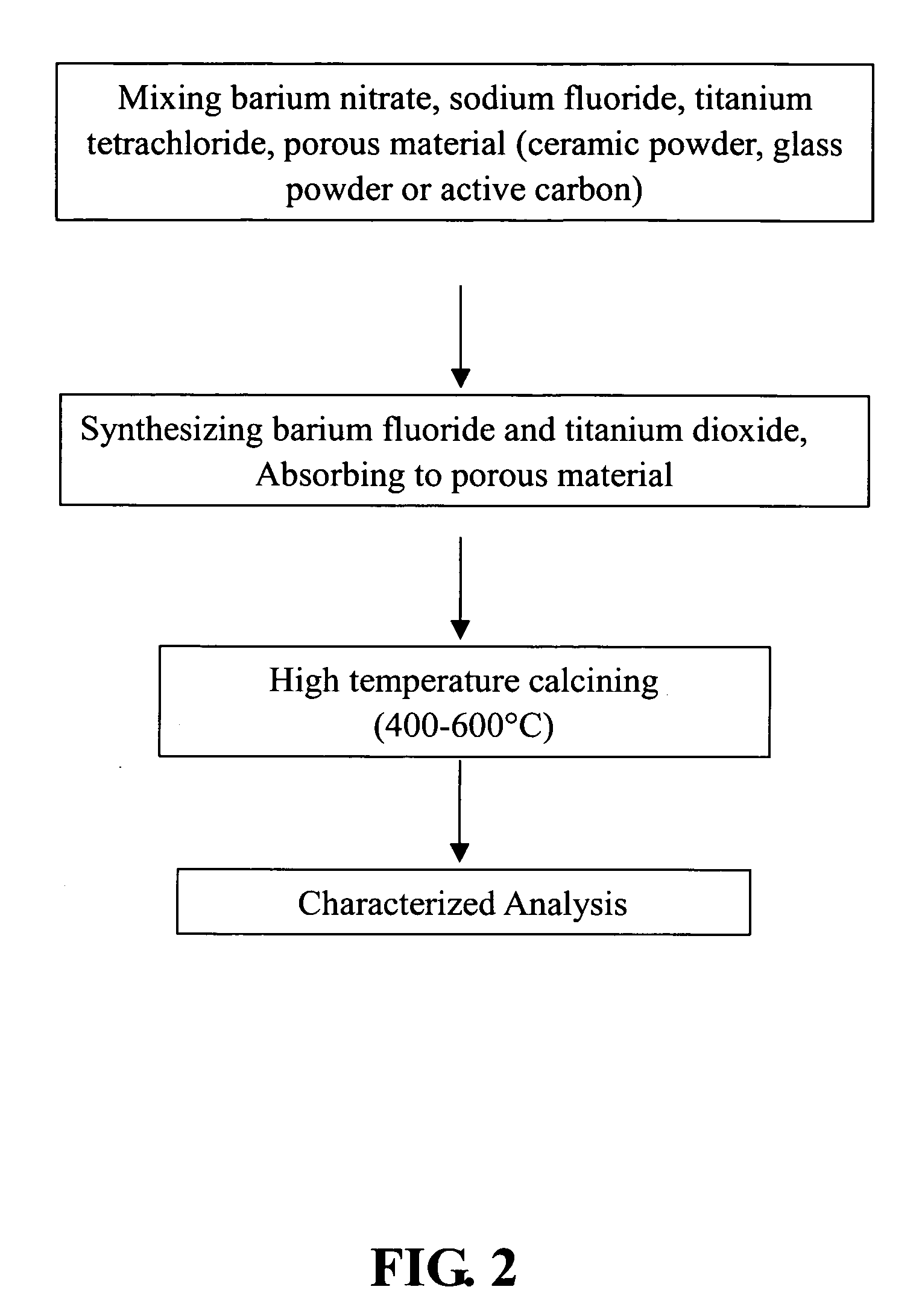Radiation sensitive photocatalyst composition and application thereof
a technology of photocatalysts and compositions, applied in catalyst activation/preparation, metal/metal-oxide/metal-hydroxide catalysts, physical/chemical process catalysts, etc., can solve the problem that technology is no longer considered two-dimensional surface technology, and achieve the effect of enhancing the efficiency of irradiation of tio2, improving the radiation efficiency of irradiated tio2, and losing its energy
- Summary
- Abstract
- Description
- Claims
- Application Information
AI Technical Summary
Benefits of technology
Problems solved by technology
Method used
Image
Examples
example 1
Preparation of Radiation Sensitive Photocatalyst Composition
[0027] A predetermined amount of EDTA is mixed into alkaline solution at room temperature, followed by addition and dissolution of barium nitrate, sodium fluoride. After ceramic powder is added and stirred evenly, titanium tetrachloride is slowly dropped into the solution and stirred for at least two hours. The mixture is heated to evaporate the solution, dried in an oven, and calcined at 400° C. to obtain the radiation sensitive photocatalyst composition powder. The weight of barium nitrate, sodium fluoride, titanium tetrachloride and porous materials are in the ratio of 1-5:0.7-1.8:0.4-2.0:2-7. The molal for EDTA is the sum of those of barium nitrate and titanium tetrachloride. Both barium fluoride and titanium dioxide are eventually synthesized and immobilized on the surface of porous ceramic powder.
[0028] The weight content of titanium and barium in the finished product of radiation sensitive photocatalyst composition...
example 2
Photocatalysis with Radiation Sensitive Photocatalyst Composition by γ-Ray of Co-60 Radiation
[0031] Methylene blue (MB) is prepared at six aliquots of 10 ppm solution with 0.2 g of each C1-C6 photocatalysis composition prepared from Example 1 respectively. These slurries are irradiated with 5×106 Bq Co-60 source at 0.3Gy (wherein the maximal absorption dose rate is 4 mGy / h). The maximal absorbance of MB peaks is at 663 nm. The degradation of MB during the experiment has been determined with the UV-Vis. spectrophotometer.
[0032] The diagram of reaction setup for photocatalysis using photocatalyst composition proposed in the invention is shown in FIG. 4. Organic substance desired to be treated (such as dyes, spent resin or industrial waste water) and the radiation sensitive photocatalyst composition are added into the solution and homogeneously mixed with a stirrer as mixture. Radiation source Co-60 is placed in the mixture with an outside lead shield protection. Fresh air is injecte...
example 3
Photocatalysis with Radiation Sensitive Photocatalyst Composition by β of P-32 Radiation
[0034] 70 ml of 100 ppm phenol solution is prepared with 0.2 g C6 photocatalysis composition prepared from Example 1. The slurry is irradiated with 1.7×107 Bq P-32 source for various period of time. The maximal absorbance of phenol peaks is at 270 nm. The degradation of phenol during the experiment has been determined with HPLC (PROSTAR-ANALYTICAL HPLC from VARIAN) equipped with Lichrospher 100 RP-18 Column (5 micron), and the mobile phase contains 50% of acetonitrile and 50% of distilled water.
[0035] The reactor setup for photocatalysis is shown as FIG. 4 except the Co-60 is replaced by P-32.
[0036] As listed in Table 4, AO represents the measured absorbance activity of phenol solution before the irradiation at wavelength 270 nm, and At represents the absorbance activity after the irradiation treatment for the composition. The At / A0 value is decreased with the increased irradiation time. It sh...
PUM
| Property | Measurement | Unit |
|---|---|---|
| Temperature | aaaaa | aaaaa |
| Fraction | aaaaa | aaaaa |
| Particle size | aaaaa | aaaaa |
Abstract
Description
Claims
Application Information
 Login to View More
Login to View More - R&D
- Intellectual Property
- Life Sciences
- Materials
- Tech Scout
- Unparalleled Data Quality
- Higher Quality Content
- 60% Fewer Hallucinations
Browse by: Latest US Patents, China's latest patents, Technical Efficacy Thesaurus, Application Domain, Technology Topic, Popular Technical Reports.
© 2025 PatSnap. All rights reserved.Legal|Privacy policy|Modern Slavery Act Transparency Statement|Sitemap|About US| Contact US: help@patsnap.com



